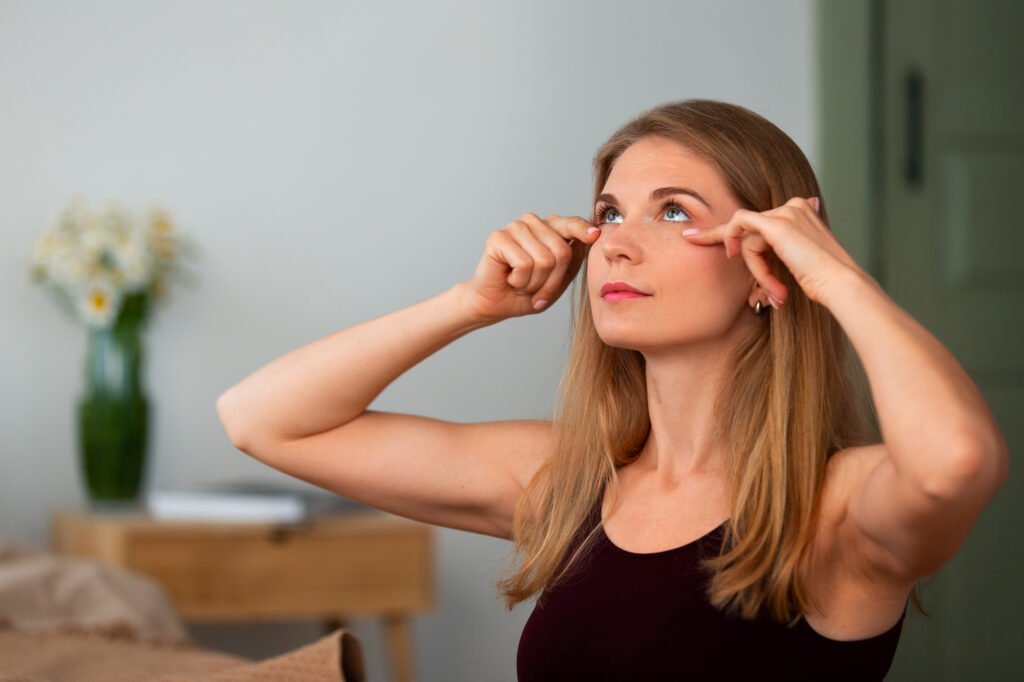
They say the eyes are the windows to the soul, but what happens when those windows look perpetually tired, even after a full night’s sleep? Your eyes communicate more than words ever could—they convey energy, emotion, and vitality. Unfortunately, they’re also one of the first areas to show signs of ageing, sometimes telling a story that doesn’t match how you actually feel.
If you’ve noticed that your eyes make you look exhausted, sad, or older than you are, you’re not alone. Drooping eyelids, under-eye bags, and excess skin around the eyes can significantly impact your appearance and, surprisingly, even your vision. This is where blepharoplasty comes in—a surgical procedure that’s helping people reclaim the bright-eyed look they remember.
What Is Blepharoplasty?
Blepharoplasty, commonly known as eyelid surgery, is a procedure designed to remove excess skin, muscle, and sometimes fat from the upper or lower eyelids—or both. It’s one of the most common facial cosmetic procedures, but it’s not purely aesthetic; in some cases, it can also improve vision obstructed by drooping upper eyelids.
The procedure addresses several concerns that naturally develop with age. As we get older, the skin around our eyes loses elasticity, muscles weaken, and fat deposits can shift or accumulate. This creates that tired, heavy appearance that no amount of sleep or expensive eye cream seems to fix.
What many people don’t realise is that blepharoplasty isn’t about changing your eye shape or creating a completely different look. Instead, it’s about restoring a more youthful, refreshed version of your natural appearance—essentially turning back the clock to reveal the eyes you once had.
What Your Eyes Might Be Saying
The area around your eyes can communicate things you don’t intend. Drooping upper eyelids might make you appear tired, disinterested, or even sad, regardless of your actual mood. Heavy, hooded eyes can create shadows that make you look perpetually exhausted, even after a weekend of rest.
Lower eyelid concerns present their own challenges. Puffy bags under the eyes often suggest sleeplessness or poor health, whilst excess skin or wrinkles can add years to your appearance. These physical changes can affect not just how others perceive you, but also how you see yourself.
Beyond aesthetics, severely drooping upper eyelids can actually impair your peripheral vision. Some people find themselves constantly raising their eyebrows or tilting their heads back to see correctly—a functional issue that goes well beyond cosmetic concerns. In these cases, blepharoplasty isn’t vanity; it’s a practical solution to a real problem.
Understanding the Procedure
Blepharoplasty can be performed on the upper eyelids, lower eyelids, or both, depending on your specific concerns and goals.
Upper blepharoplasty involves making an incision along the natural crease of your eyelid. Through this carefully placed incision, the surgeon removes excess skin and, in some cases, a small amount of fat or muscle. The incision is then closed with fine sutures, which typically leave minimal, well-hidden scarring within the natural eyelid fold.
Lower blepharoplasty can be approached in different ways. If you primarily have excess skin, the incision is usually made just below the lower lash line. If fat removal or repositioning is the primary goal, the surgeon may use a transconjunctival approach, making the incision inside the lower eyelid, where it’s completely invisible.
The procedure is usually performed under local anaesthetic with sedation, though a general anaesthetic is also an option. Surgery typically takes between one and three hours, depending on whether you’re having upper lids, lower lids, or both treated.
What to Expect: Recovery and Results
Understanding the recovery process is essential for planning your blepharoplasty. This isn’t a “lunchtime procedure”—you’ll need to set aside proper time to heal.
Immediately after surgery, you can expect swelling and bruising around your eyes. Your surgeon will provide you with cold compresses and specific aftercare instructions to help manage these symptoms. Most people describe the sensation as tightness rather than significant pain, and any discomfort is easily managed with prescribed pain relief.
The first week is when you’ll see the most dramatic changes day by day—bruising typically peaks around day three before gradually fading. Swelling takes longer to resolve fully, whilst the apparent puffiness subsides within two weeks, subtle swelling can persist for several months.
Most people feel comfortable returning to work and social activities after 10 to 14 days, once the bruising has faded sufficiently to be covered with makeup if needed. However, you should avoid strenuous exercise and heavy lifting for at least three weeks.
The initial results are visible once swelling subsides, but your eyes will continue to settle and refine for several months. The final result—the true reflection of what blepharoplasty has achieved—becomes apparent around six months post-surgery.
One of the most satisfying aspects of blepharoplasty is its longevity. Whilst your eyes will continue to age naturally, the improvements from surgery typically last 10 to 15 years or more. Many people never require a repeat procedure.
Who Is a Good Candidate for Blepharoplasty?
Ideal candidates for blepharoplasty are generally in good overall health and have realistic expectations about what the surgery can achieve. You might be a suitable candidate if you have experience:
Excess skin on your upper eyelids that perhaps interferes with your vision, persistent puffiness or bags under your eyes that don’t improve with rest or skincare, or a tired appearance that doesn’t reflect how you actually feel.
Age isn’t necessarily a barrier—while most people who undergo blepharoplasty are over 35, some younger individuals with inherited traits, such as early under-eye bags, may also be candidates.
However, blepharoplasty isn’t suitable for everyone. If you have certain medical conditions that affect healing, such as dry eye syndrome or thyroid problems, or unrealistic expectations, your surgeon may advise against the procedure or recommend addressing these issues first.
Blepharoplasty vs. Non-Surgical Alternatives
Before committing to surgery, it’s worth understanding your alternatives. Non-surgical treatments can address some eye area concerns, though they have limitations.
Injectable fillers can soften the tear trough area and reduce the appearance of under-eye hollows, whilst anti-wrinkle injections can smooth crow’s feet. These treatments offer subtle improvements with no downtime, but they can’t remove excess skin or significantly reduce large under-eye bags.
Some people try combining non-surgical treatments first, then opt for blepharoplasty when they want more comprehensive, long-lasting results. Others go straight to surgery, knowing it’s the only option that will truly address their concerns.
A skilled cosmetic surgeon can help you understand which approach—or combination of approaches—will best achieve your goals.
Choosing Your Surgeon
This cannot be overstated: choosing the right surgeon is the most important decision you’ll make in your blepharoplasty journey. Your eyes are delicate, complex structures, and surgery around them requires exceptional skill and experience.
Look for a surgeon who is registered with the General Medical Council and on the specialist register for plastic surgery. Membership in professional organisations like the British Association of Aesthetic Plastic Surgeons (BAAPS) or the British Association of Plastic, Reconstructive and Aesthetic Surgeons (BAPRAS) indicates additional credentials and commitment to standards.
During consultations, don’t be afraid to ask questions. How many blepharoplasty procedures has the surgeon performed? Can you see before-and-after photos of their previous patients? What are the potential risks and complications? How will they be managed?
A good surgeon will listen to your concerns, examine your eyes carefully, and provide honest advice about what’s achievable. They’ll never pressure you into treatment or promise unrealistic results.
The Emotional Impact
Beyond the physical changes, blepharoplasty can have a profound emotional impact. Many patients report feeling more confident, looking more approachable, and no longer feeling the need to “explain” why they look tired.
There’s something powerful about having your external appearance match your internal vitality. When people stop asking if you’re feeling alright or suggesting you need more sleep, it reinforces that the eyes truly are telling your story—and now, they’re telling the right one.
The Bottom Line
Blepharoplasty provides a permanent solution to concerns that skincare, lifestyle changes, and non-surgical treatments may not fully address. It’s not about vanity; it’s about ensuring that what people see when they look into your eyes reflects the vibrant, energetic person you are.
If drooping eyelids or under-eye bags are affecting your confidence, appearance, or even your vision, blepharoplasty may be worth considering. Book consultations with qualified surgeons, ask questions, and take your time to make an informed decision. Your eyes deserve nothing less than expert care and considered thought.
After all, they say more about you than you might realise—make sure they’re saying exactly what you want them to.
